
The 2025 event agenda is HERE!
Take a peek at the key presentations we've confirmed with leaders from Nippon Steel, SunCoke Energy, The U.S. Chemical Safety and Hazard Investigation Board, American Coke and Coal Chemicals Institute and more!

.jpg?ext=.jpg)

Siew Hua Seah is the Senior Editor for Ferrous Markets at Argus Media. She oversees a team that spans Asia Pacific, Europe and the Americas covering the iron ore, met coal, steel and metallics markets. In her 18 years reporting on commodities, she has covered the thermal coal, bitumen, LNG, freight, fertilizers, iron ore and met coal markets. In addition to her time at Argus, Siew Hua was a research fellow at the Oxford Institute for Energy Studies-Saudi Aramco in 2014, researching Indonesia’s natural gas policies.

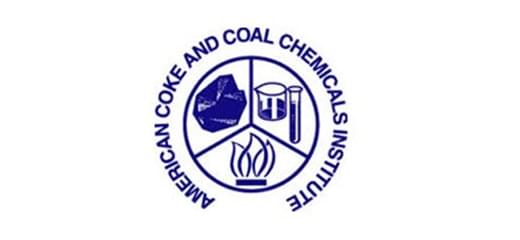
David Ailor has been with the Washington, D.C.-based American Coke and Coal Chemicals Institute for more than 20 years. His tenure with ACCCI includes 16 years, from 1989 – 2005, as ACCCI’s first Director of Regulatory Affairs; and, six years, from 2015 to the present, as President of the Institute.
As ACCCI President, Mr. Ailor, who reports to ACCCI’s Board of Directors, organizes and manages four off-site meetings of the Institute each year, including ACCCI’s Annual Meeting, a Business Meeting of the Board, and biannual meetings of ACCCI’s “Manufacturing, Environmental, and Safety and Health” (MESH) Committee. Additionally, he prepares and manages an annual budget for the Institute.
Mr. Ailor also has many of the same responsibilities he had from 1989 – 2005, when he served as ACCCI Director of Regulatory Affairs. His overall responsibility in this area is
monitoring and reporting to ACCCI’s membership on Federal agency actions on environmental and employee safety issues of potential concern to the membership. Related responsibilities include analyzing regulations/legislation; formulating policy positions; developing regulatory responses; and, working with the relevant regulatory agencies (EPA, OSHA) to ensure the reasonableness of the regulations being developed.

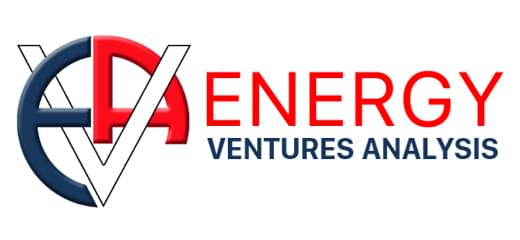
Mr. Schwartz is the President of the consulting firm of Energy Ventures Analysis and was one of the founders of the firm in 1981. He and his firm specialize in applied analysis of energy markets, including power, coal, natural gas, oil, renewables, and emissions. EVA publishes regular reports on energy markets, including forecasts of supply, demand, and prices. EVA’s clients include energy consumers, producers, and transporters as well as investors and regulators. Mr. Schwartz manages EVA’s coal consulting practice, which includes market studies, investment analysis, procurement operations, property valuations and transaction services. Mr. Schwartz testifies on energy markets before courts and regulatory agencies and has served as an arbitrator in contract disputes. He has also served as CEO of Centennial Resources and Atlantic Carbon, two coal producers and has been an agent for power plant coal procurement activities. He received a degree in Geological Engineering from Princeton University in 1977.


Feng holds Bachelor’s and Master’s degrees in Metallurgical Engineering, and Ph.D. in Materials Science and Engineering. Feng joined Hatch Ltd. as a Process Engineer- Pyrometallurgy in 2022. He has +9 year research experience in the fields of high-temperature metallurgical processes. His expertise and experience include green steel technology covering low-carbon iron-/steel-making process optimization and technology development, thermochemical calculations/simulations and development of thermodynamic databases, upgrading low-grade ores or tailings, roasting and smelting of nickel/copper sulfide ores, and lead extraction from spent lead acid batteries.


Anand Mohan Srivastava is a mining industry expert with over 32 years of experience across Asia and Latin America. He holds an M.Tech in Applied Geology from IIT Roorkee and an MBA in Finance. As CEO of Andean Anthracite Ace, he has positioned
Peruvian anthracite on the global stage, leading strategic transformations that earned the company the Peruvian Company of the Year 2022 and Latin America Quality Industry 2023 awards. Anand is a frequent speaker at global events. In 2025, he presented at
the McCloskey Steel & Ferroalloy Conference in Cape Town and the Coal Conferences of the Americas in Cartagena, sharing insights on global markets and the growing role of Latin America. This September, he will participate in Eurocoke in Amsterdam. He is known
for combining deep technical expertise with strategic vision. Beyond business, Anand promotes holistic well-being through yoga, meditation, and long-distance running.
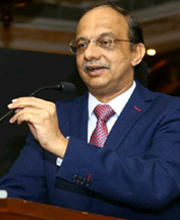

Bio to come!


I serve on the Board of Directors of Appalachian Electric Cooperative and the Advisory Board of Fairview Technology Center and have authored papers published in respected journals.
I earned a degree in Electrical Engineering, an MBA, and an MS in Engineering Reliability & Safety from the University of Tennessee. I am currently working on my DBA doctoral dissertation on Manufacturing Leadership and Reliability. I also hold CMRP and CRL certifications.
I’ve achieved success in a range of executive capacities, including:
As Senior Training Instructor at global technology leader Emerson, I wrote and conducted 12 Machinery Health Monitoring Training courses, developed course demo equipment, and served as SME on CSI vibration systems.
As National Account Manager at AESSEAL, I provided clients like International Paper and Archer Daniels Midland with best-in-class mechanical seals for pumps and mixers.
As Founder & CEO of MAARS, Inc., I raised $1.2M startup capital, co-patented a signal conditioner for an online vibration system, and for 12 years manufactured innovative online machinery monitoring hardware and software.
At Computational Systems, Inc. (CSI) as Application Sales Engineer, then Midwest Regional Manager, I received multiple Salesperson of the Year awards and led their ‘Top Gun’ Business Development and Sales training.


Dennis Lippmann currently serves as President of Graphitic Energy, a technology provider for clean hydrogen and graphite production through pyrolysis of natural gas. In this role, he oversees operations, technology, and business development of the company.
With more than 30 years of experience in hydrogen and syngas technologies, Dennis began his career as a process engineer before advancing to leadership roles in process engineering and executive management across major licensors and EPC firms.
Previously, he served as President & CEO of thyssenkrupp Uhde USA, focusing on engineering and construction of hydrogen, ammonia, fertilizer and metallurgical coke plants, and as CEO of thyssenkrupp Industrial Solutions North America, covering projects across the U.S., Canada, and Mexico in chemical plants, cement, mining, automotive, and naval industries. He also led KBR’s global ammonia and syngas technology business between 2013 and 2015.
Dennis holds a PhD in Chemical Engineering from the Technical University of Clausthal, Germany. In 2023, he received the Meyer-Galow Award for Business Chemistry by the German Chemical Society (GDCh). He lives with his family in Houston, Texas.


Based in London, Singh is S&P Global Commodity Insight’s Associate Regional Pricing Director EMEA Metals leading the teams for steel, steelmaking raw materials and non-ferrous market coverage within the Europe Middle East and Africa region. She has spent close to two decades covering global commodities and equities markets. Prior to joining Platts in Singapore where she managed the Asia steel and scrap team, she was based in Beijing as Chief Correspondent, China Commodities & Energy at Reuters for three years, where she led a team of journalists covering the top consumer of commodities and energy such as metals, soybean, crude oil, gas, steel, pork. Previously, she was based in Singapore as Asia Editor at Fastmarkets and was responsible for non-ferrous, ores and alloys coverage in the Asian region for several years.


Carlos Felipe Barrera is a seasoned executive with extensive experience in the mining and energy sectors, currently serving as the Managing Director for John T. Boyd in South America. With a strong background in business planning, contract negotiation, and corporate governance, he excels in leadership and project management. Carlos has a proven track record of fostering cross-cultural teams and developing innovative solutions to complex challenges. His academic credentials include advanced studies in governance and negotiation from prestigious institutions such as Harvard and Oxford. Passionate about transforming the mining industry, he is committed to promoting better practices and sustainability. Carlos is also known for his ability to build strong client relationships and drive business development initiatives across Latin America. Beyond his professional pursuits, he is dedicated to mentoring others and helping them achieve their potential. His multilingual capabilities enhance his effectiveness in diverse environments.


Brian Jamieson is a Principal Scientist at Charm Industrial, where he leads efforts to scale pyrolysis products for heavy industrial applications. He holds a PhD in Materials Engineering from McMaster University in Hamilton, Ontario. His background spans traditional iron and steelmaking processes including blast furnaces, direct reduced ironmaking, and electric arc furnaces. He has more than seven years of experience at the intersection of ironmaking, industrial decarbonization strategy, and techno-economic analysis assessing how traditional processes can be adapted and supported in the transition to net-zero.
Brian is a frequent contributor to the Association for Iron & Steel Technology (AIST), where he has published on topics including bio-oil gasification and biochar utilization in ironmaking, and presented on topics such as the power demands of green hydrogen production. His work emphasizes practical, techno-economically viable pathways for industrial CO₂ abatement, with a focus on how carbon removal technologies can complement steelmaking on the path to true net-zero emissions.
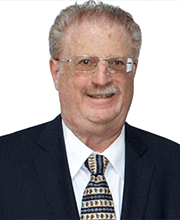
Dr. Joseph J. Poveromo (Ph.D., M.S. Center for Process Metallurgy, State U. of New York/Buffalo; BS Chem. Eng. Rensselaer Poly). From 1974 he was at Bethlehem Steel’s Homer Research Laboratories. In 1993 he established his consultancy, Raw Materials & Ironmaking Global Consulting. Through 2008 his principal client was the Quebec Cartier Mining Company, serving as Director Technology-International. Currently, he consults for steel, iron ore, other natural resource, technology provider, financial and consultancy companies on a global basis. Dr. Poveromo is a Distinguished Member of AIST (Assoc. of Iron & Steel Technology); his awards include the T. L. Joseph Award for long-standing contributions to ironmaking technology. He is also a Special Member of the IIMA(International Iron Metallics Association).


Dr. Yukihiro Kubota has over 20 years of cokemaking research and operation experience in Nippon Steel Corporation. He obtained his PhD from Tohoku University in 2012. He made significant contributions to the construction and initial operation of the SCOPE21-type coke oven at Nippon Steel Oita Works, which began operation in 2008. He served as the manager of the cokemaking plant at Yawata Works until 2014. His current role in NSC is the General Manager, Head of Coal & Coke Research Department, Ironmaking research Laboratory. He specializes in coal blending theory, coal preparation techniques, coke quality estimation, strength, size, and reactivity. His Keynote address at ICSCI 2025 focuses on Development of Technology for Improvement of Coke Strength for Low Carbonization in Blast Furnaces and/or Cost Reduction of Coke Production.


Bio to come

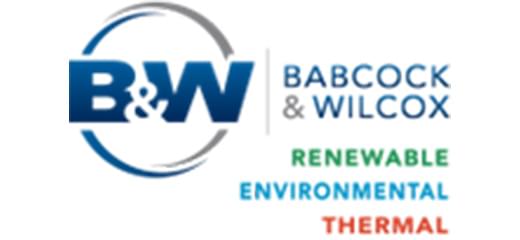
Nathan Hyrne is Director of ClimateBright for The Babcock & Wilcox Company (B&W), a leader in energy and environmental products and services for power and industrial markets worldwide.
Nathan is responsible for the Company’s strategic growth in Clean Energy including B&W’s SolveBright CO2 capture system, OxyBright oxy-firing system, BrightGen hydrogen firing system, and BrightLoop hydrogen production system.
Nathan is a military veteran who then earned is Bachelor of Science, Engineering Degree. He started with Babcock & Wilcox in 2005 as a Field Service Engineer. Nathan’s role grew in complexity quickly. He was invaluable as lead commissioning engineer for a 3x700MW scrubber project that paved the way for B&W’s SolveBright CO2 scrubber design & build knowledge. His B&W project execution knowledge grew as he worked closely with process & design engineers while on site advising the construction team.
From 2009 to 2014 Nathan commissioned and tuned environmental systems for NOx, SOx, CO, Hg, & HCl reduction. He worked on coal, gas, and biomass fired power plants around the world. Clients trust in Nathan grew as he turned over reliable systems and followed up with support.
In 2015 B&W asked Nathan to lead efforts in strategic growth. He developed new projects in biomass, utility coal conversions, petrochemical, and steel. His knowledge of B&W technology and organization continues to lead to many successful projects.


Stephen Klejst, the Executive Director of Investigations and Recommendations, joined the U.S. Chemical Safety Board (CSB) in February 2018. He is responsible for leading the agency’s investigation and recommendations programs including the Drivers of Critical Chemical Safety Change advocacy program. Mr. Klejst comes to the CSB after nearly ten years of experience with the National Transportation Safety Board where he was deputy managing director and director of the agency’s Office of Railroad, Pipeline and Hazardous Materials Investigations. During his tenure with the NTSB, Mr. Klejst led the agency’s investigation of several major pipeline and railroad accidents including the explosion of a natural gas transmission line in San Bruno, California, the rupture of a hazardous liquid transmission line in Marshall, Michigan and several significant freight railroad and transit rail accidents. Prior to joining the NTSB, Mr. Klejst had a distinguished executive career in the railroad industry with responsibilities in the areas of safety, accident investigation, regulatory compliance and technical training. Mr. Klejst received his bachelor’s degree in chemistry from the University of Pennsylvania and a master of science degree in management from the Stevens Institute of Technology. Mr. Klejst is a Certified Safety and Security Director.